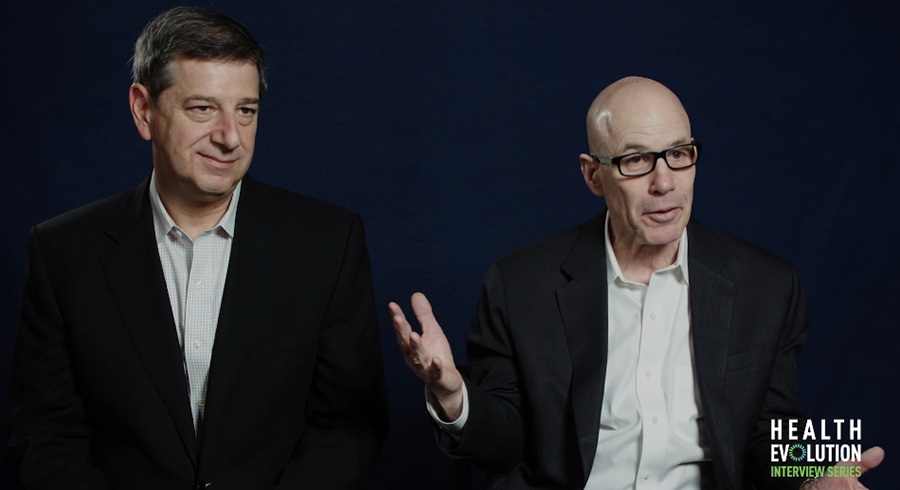It stands to reason that if the healthcare system is going to persuade patients to become more involved in their care and to shoulder more of the cost, providers and payers need to start treating patients more like valued consumers. One lesson that retailers have learned in the transition from location-based selling to e-commerce is that consumers expect to be given a choice. Today’s consumer, especially the generation that has come of age in the era of the smartphone, is well-informed and ready to shop around.
“They want product, service, price. And they don’t care whether they get it on their phone. They don’t care whether they get it in person. They don’t care whether they get it delivered,” said Bill Simon, former CEO of Walmart US in a conversation with Steve Klasko, MD, CEO of Jefferson Health at Health Evolution Summit 2018.
The payment model that has insulated consumers from the cost of healthcare is breaking up, said Klasko. “There’s just not enough money.” And today’s consumers are not passive. They have become accustomed to making their own choices.
The point was reinforced by a panel of 18 CEOs from prominent payer, provider and life sciences organizations convened during the Health Evolution Summit by Oliver Wyman. They were asked to discuss the need for healthcare to adapt to the same forces that have shaped the retail industry. (The report CEO Briefing Room – Thinking Like a Retailer is available for download.)
Among the lessons for healthcare CEOS: trust leads to loyalty. Walmart built trust through a consistent application of its “Everyday Low Price” approach, coupled with transparency in pricing. This mission is embedded throughout the organization, impacting incentive models and workforce expectations. As one example, Walmart store managers have the authority to lower product prices but cannot raise them. The policy helps Walmart management keep the “everyday low-price mission” top-of-mind at all levels of the organization.
“The superstore model is really founded on a consumer truth, which is people want breadth of assortment and low prices,” said Simon.
Healthcare has only started to move away from the traditional payment models, and the trends are not fully in focus. Many consumers see only the copay and don’t recognize the rest of the cost in delivering quality care. As more costs are shifted to the consumer, that will change.
Walmart is seeing the trend play out in its sale of drugs. Simon said that when drugs go off patent, the company’s pharmacies enjoy a dramatic increase in market share for these drugs. This is a natural benefit that stems from the loyalty that Walmart has built.
He believes that when consumers have a choice, they turn to a company they trust. And while price is an important factor, he believes that consumers also move their purchases to Walmart because the chain makes it easy to buy in person, by phone or online.
Klasko believes that healthcare needs to learn the lesson of accessibility and provide care wherever consumers want it. “We won’t be defined by our hospitals,” he said. “We call it, “Healthcare with no address.” I want people to define Jefferson by our care, our caring, our cost, access, patient experience, and quality model.”
Klasko says that planning for this transition is a regular topic of discussion with the Jefferson Health board. “I need to enter the consumer revolution.”
He believes that millennials will value technology over loyalty and that healthcare CEOs should pay attention to the initiative underway by Amazon, JP Morgan and Berkshire.
“When three companies that size say, ‘The only thing that’s stuck in the ’90s for our employees is healthcare, and we’re mad as hell and not going to take it anymore,’ that should be taken really seriously.”
“And so we’re taking it really seriously. We’re looking at the successful retail modelers that didn’t give up their entire strategy, but that also didn’t stick to what had made them successful in the ’70s and ’80s.”
Klasko shared an example of how Jefferson is approaching this shift in thinking.
“Think about a 25-year-old that gets told she’s pregnant by her 64-year-old male primary care doctor. It used to be that he would say, ‘I’m going to send you to my obstetrician, Dr. Simon,’ and patients say, ‘Great, he must be the best.’ Now, it’s, ‘Oh, wait. That might be who you’d go to, but I want someone that’ll accept my doula. I want a predominantly female group. I have Aetna X plan, so I don’t want to spend more than $1,000. I can only be seen on Fridays because I work at Walmart, that’s the best day for me to go.’ “
Jefferson is preparing for the transition by developing a system to help patients find the best physician for their own needs.
Simon advises healthcare CEOs to pay attention to the shift toward price transparency.
“Data availability is moving at light speed, and there is so much data in healthcare. The intermediaries, third-party administrators and PBMs are in control over data but that will change. And when that happens, the consumer and the provider will connect. That’s happening in every other aspect of business.” — Gus Venditto










